Brown Derby - Hollywood
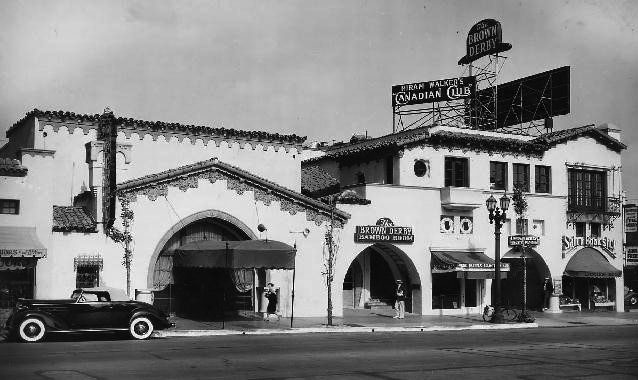 |
|
| (1930s)^ - The Hollywood Brown Derby located at 1628 N. Vine Street. A long awning extends over the sidewalk that leads to its entrance. At right, a hat-shaped sign for the Derby is visible extending from the second story of a Spanish Revival-style building, below which a second sign reads "Hiram Walker's 'Canadian Club'". At far right is the Satyr Book Shop, one of the earliest bookstores in Hollywood. |
Historical Notes The Hollywood Brown Derby Vine Street building was originally designed and constructed as a studio office for Cecile B. Demille. It would open as the Brown Derby Restaurant in 1929. The Brown Derby chain was started by Robert H. Cobb and Herbert Somborn (a former husband of film star Gloria Swanson). Bob Cobb is known as the inventor of the California Cobb Salad. He was also part owner of the Hollywood Stars baseball team. |
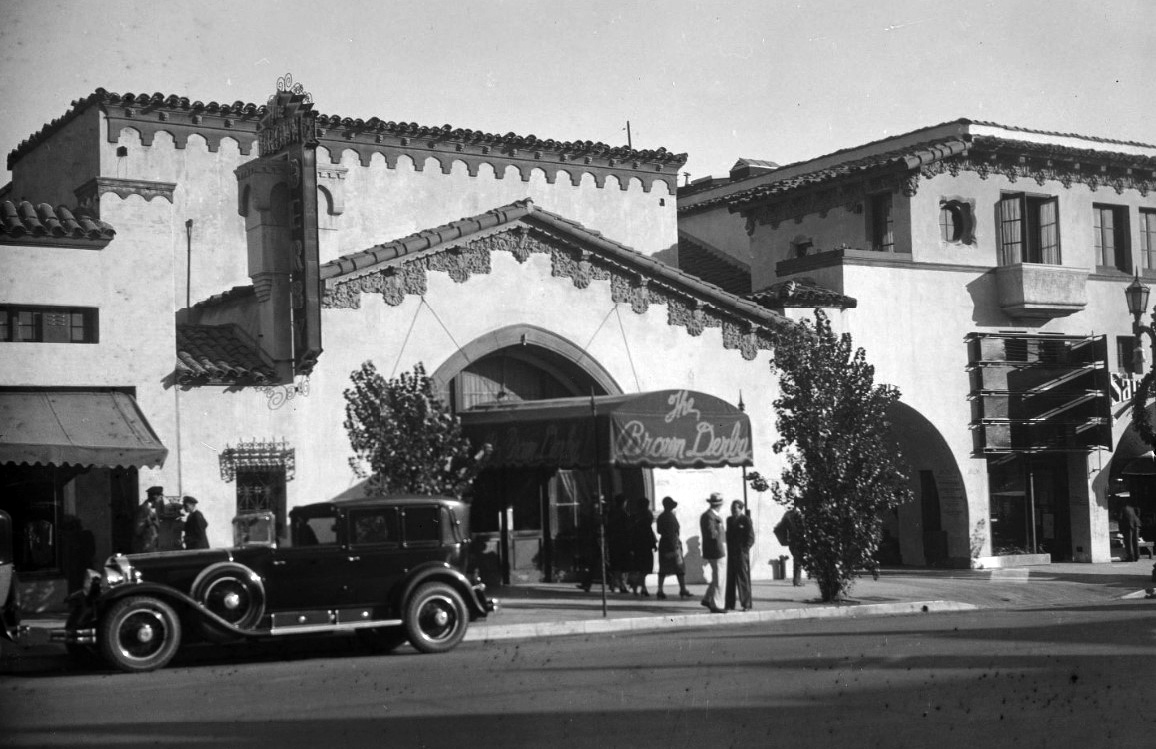 |
|
| (1931)* - Close-up view of the Brown Derby Restaurant entrance, with Vine Street, cars, and pedestrians in foreground. The edge of Satyr Book Shop can be seen at far right. |
Historical Notes Despite its less distinctive Spanish Mission style facade, the Hollywood Brown Derby, which opened on Valentine's Day 1929 at 1628 North Vine Street, was the branch that played the greater part in Hollywood history. Due to its proximity to movie studios, it became the place to do deals and be seen. Clark Gable is said to have proposed to Carole Lombard there. Rival gossip columnists Louella Parsons and Hedda Hopper are recorded as regular patrons.^ |
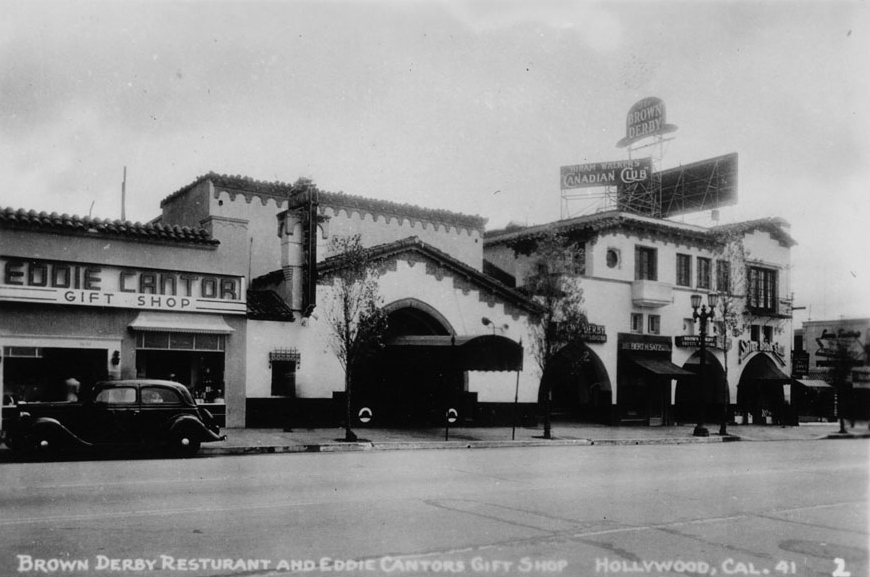 |
|
| (ca. 1938)^ - Postcard view of the Brown Derby Restaurant on Vine Street. At left, an automobile is parked in front of the Eddie Cantor gift shop. |
Historical Notes The building’s architect, Carl Jules Weyl’s, also designed the Hollywood Playhouse further up Vine Street (now home to Avalon nightclub), several other Brown Derbys, the Gaylord Apartments on Wilshire, and many other distinctive homes of the era. He later became a noted art director and went on to win an Academy Award for art direction on the classic 1938 Errol Flynn-Olivia de Havilland film, “The Adventures of Robin Hood.”* |
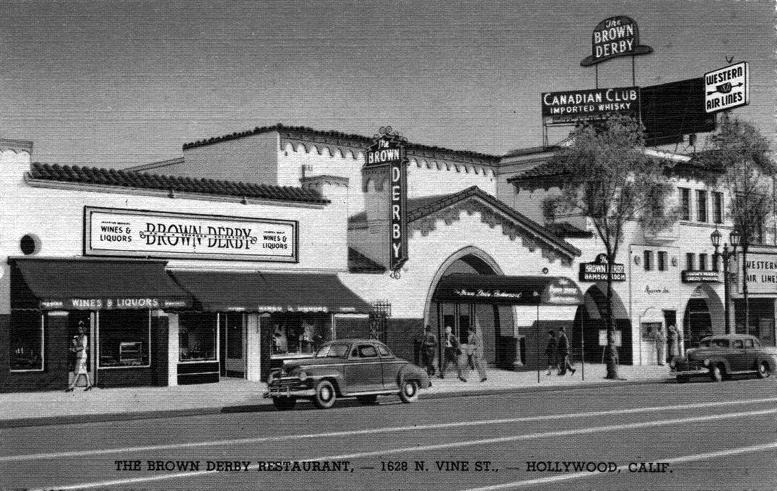 |
|
| (ca. 1939)^^^ - Postcard view of "The Brown Derby Restaurant" - 1628 N. Vine Street - Hollywood, Calif. |
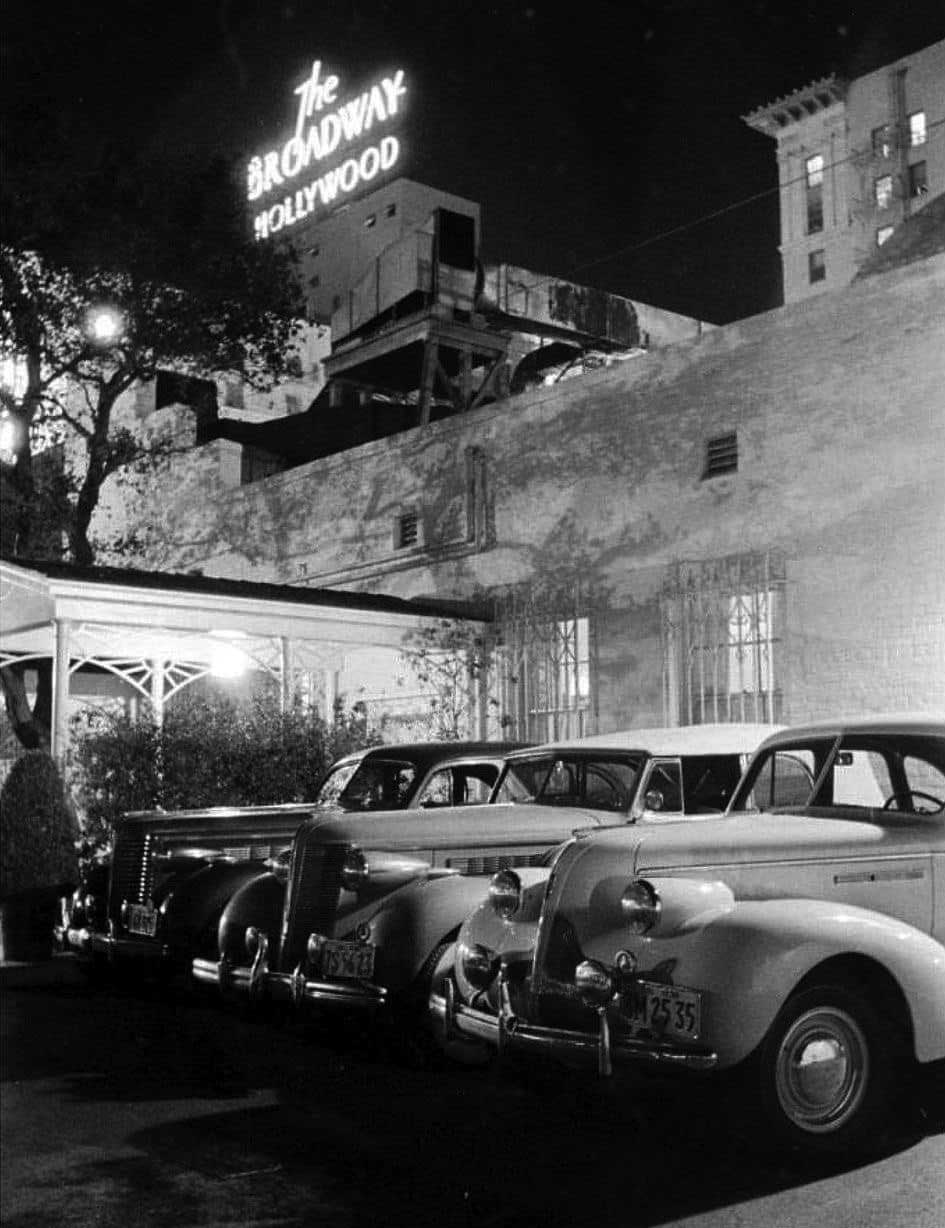 |
|
| (ca. 1939)^ – View showing three Buicks (1938, 1937, and 1939) in the side parking of the Vine Street Brown Derby with the bright neon sign atop the Broadway Hollywood (Hollywood and Vine) seen in the background. Photo: LIFE Magazine |
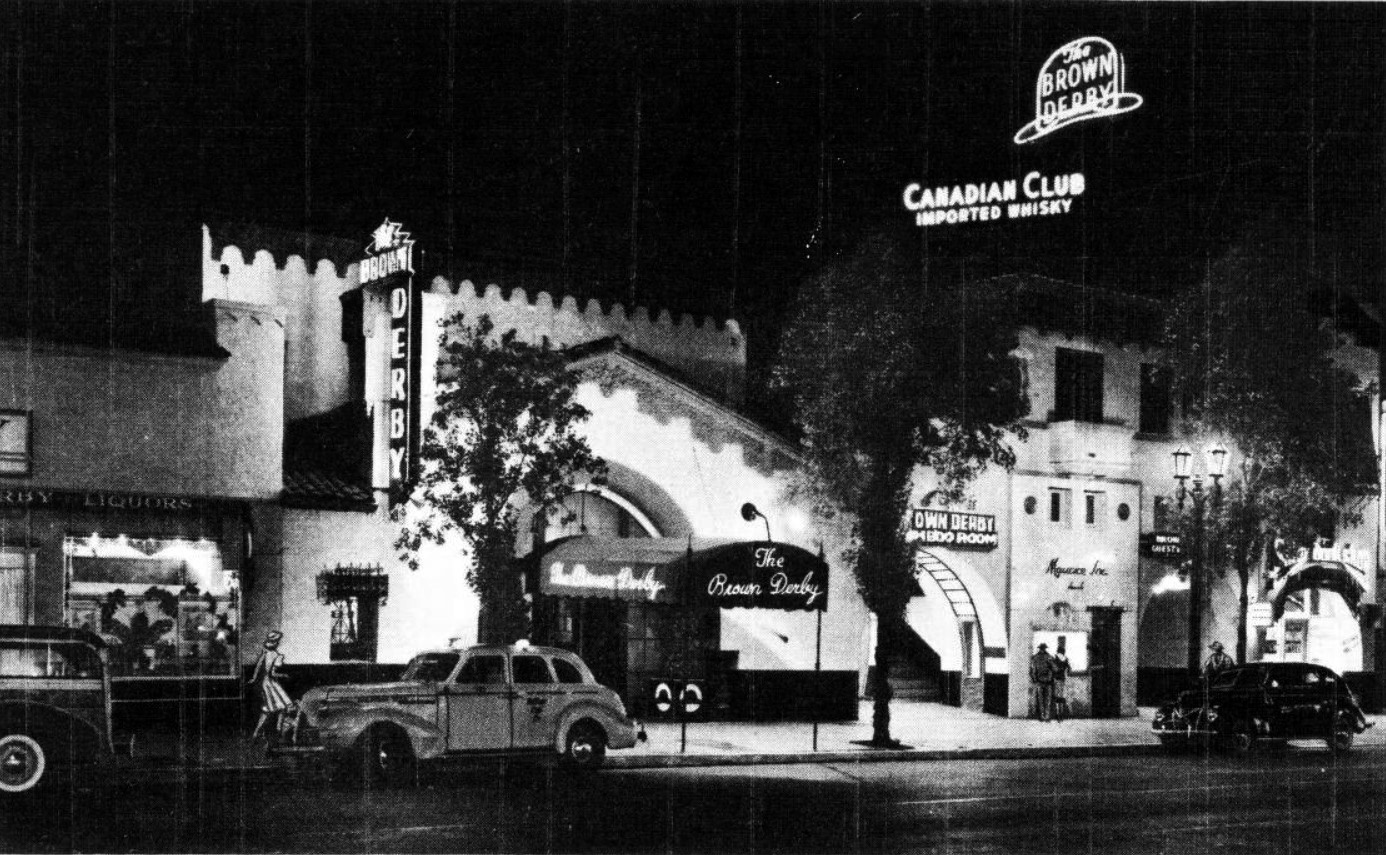 |
|
| (ca. 1940)^ - Nighttime postcard view of the Brown Derby Restaurant in Hollywood. Picture file card reads: "The rendezvous of the stars, the Brown Derby, Hollywood, California. The famed Brown Derby on Vine Street, Hollywood, with its adjacent distinctive Bamboo Room, is the acknowledged center of the smart social life of the movie colony." |
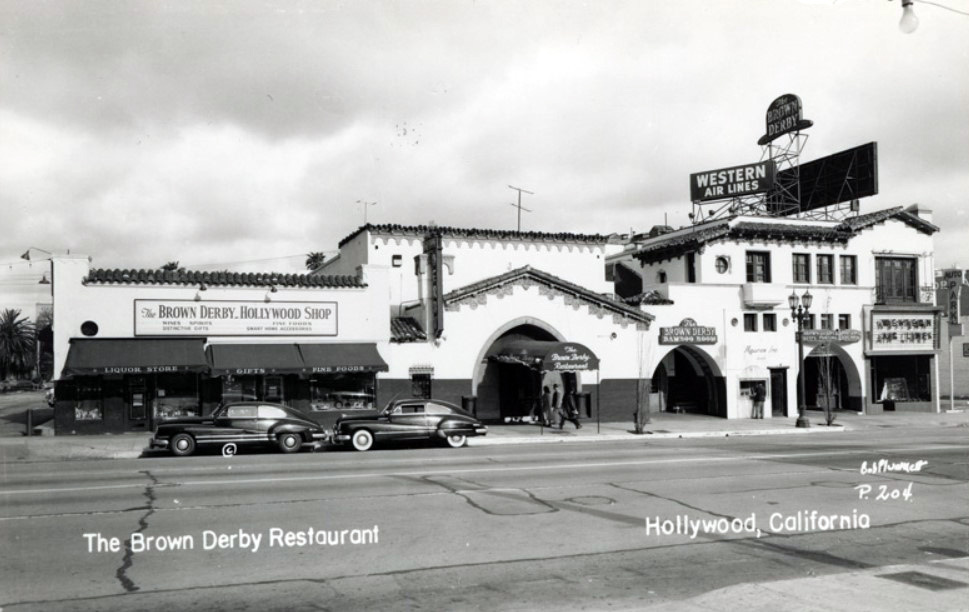 |
|
| (1940s)* - Postcard view showing the Brown Derby Restaurant. Sign above cars on the left reads: The Brown Derby..Hollywood Shop. Photo by Bob Plunkett |
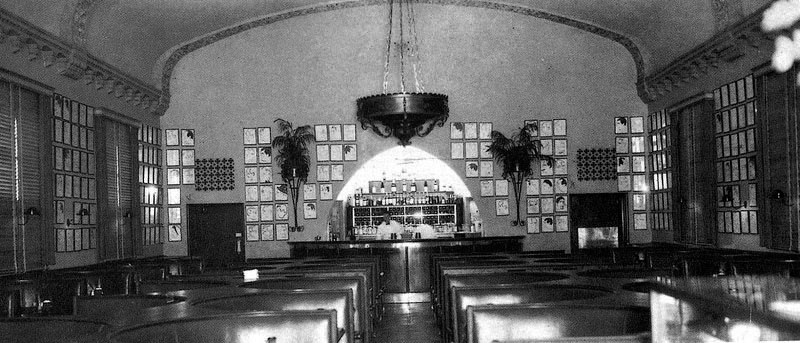 |
|
| (ca. 1930s)^ - Interior view of the Vine Street Brown Derby, which opened in 1928. Note the pictures on the wall. |
Historical Notes The interior walls were covered with famous caricatures drawn by an artist whose name was so long and complicated, he shortened it to Vitch. He originally approached the owners of the Brown Derby asking if he could draw the caricatures of diners in exchange for a bowl of hot soup and a cup of coffee. They became very popular and soon it became a “thing” to sit at the Brown Derby below your portrait. |
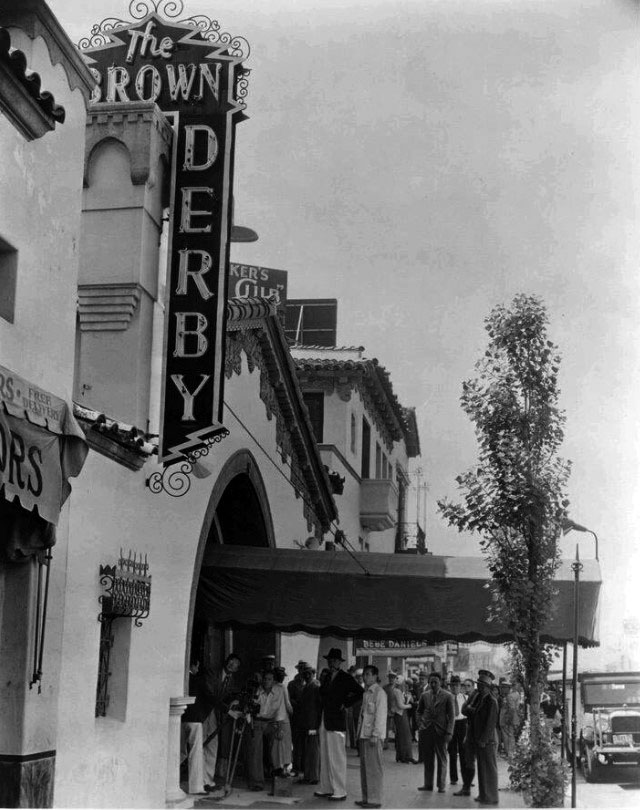 |
|
| (1930s)^ – View showing a group of men standing in front of the Brown Derby on Vine Street. |
 |
|
| (ca. 1940s)* - View showing pedestrians walking past the entrance to the Brown Derby. On top of the next building is a prominent sign reading "Western Air Lines". |
Historical Notes The Hollywood Brown Derby became part America's Culture industry. Stars received fan mail addressed simply to: The Brown Derby, Hollywood and Vine. |
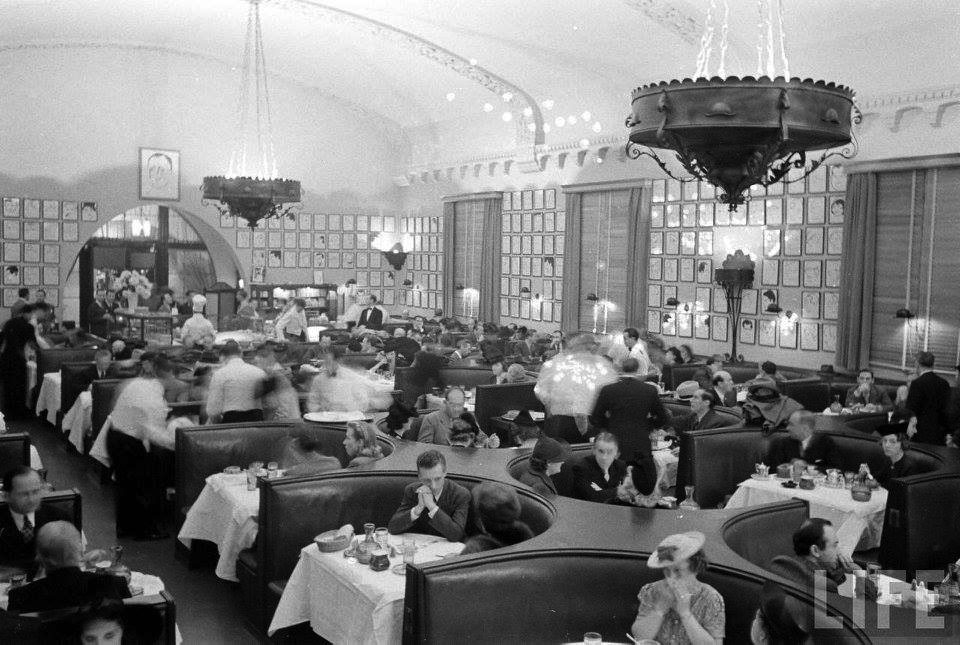 |
|
| (ca. 1940s)* – Life Magazine photo showing the interior of the Vine Street Brown Derby. The waiters are bustling around the restaurant, tending to well-dressed patrons huddled in booths, while Eddie Vitch’s caricatures fill every square inch of the walls. Note the ornate chandeliers. Photo: LIFE Magazine |
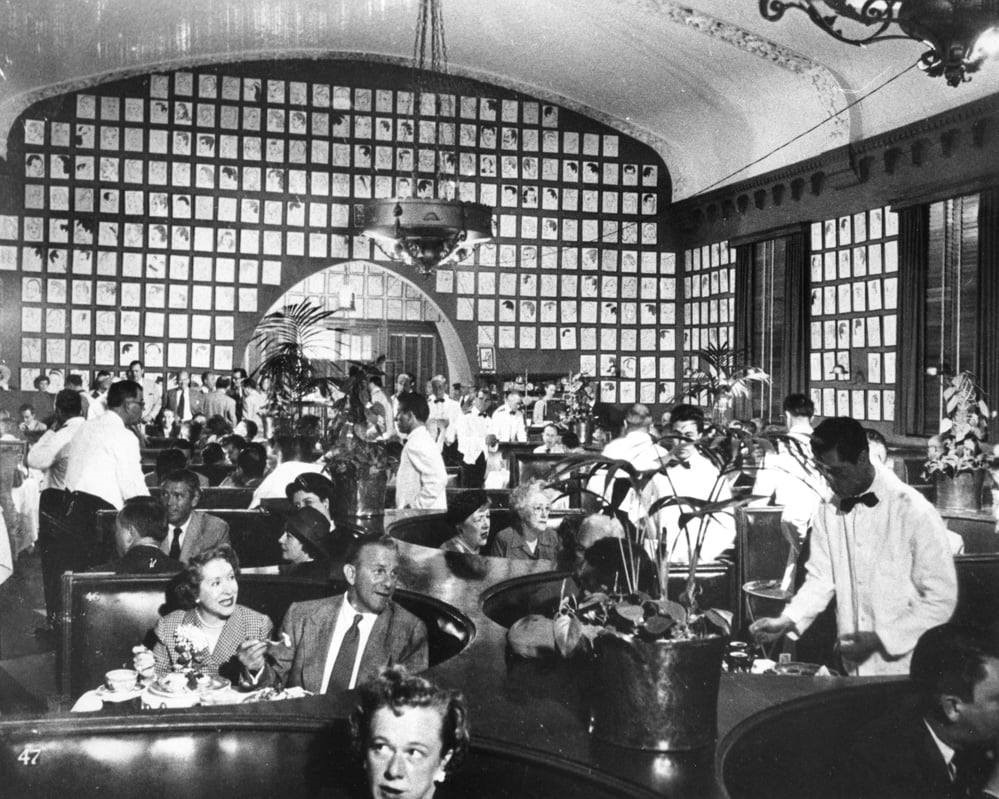 |
|
| (1951)^ - George and Gracie Burns having lunch with scores of other patrons at the Brown Derby. Note how the interior walls are covered with famous caricatures. It became a “thing” for the movie stars to sit at a table below their portrait. |
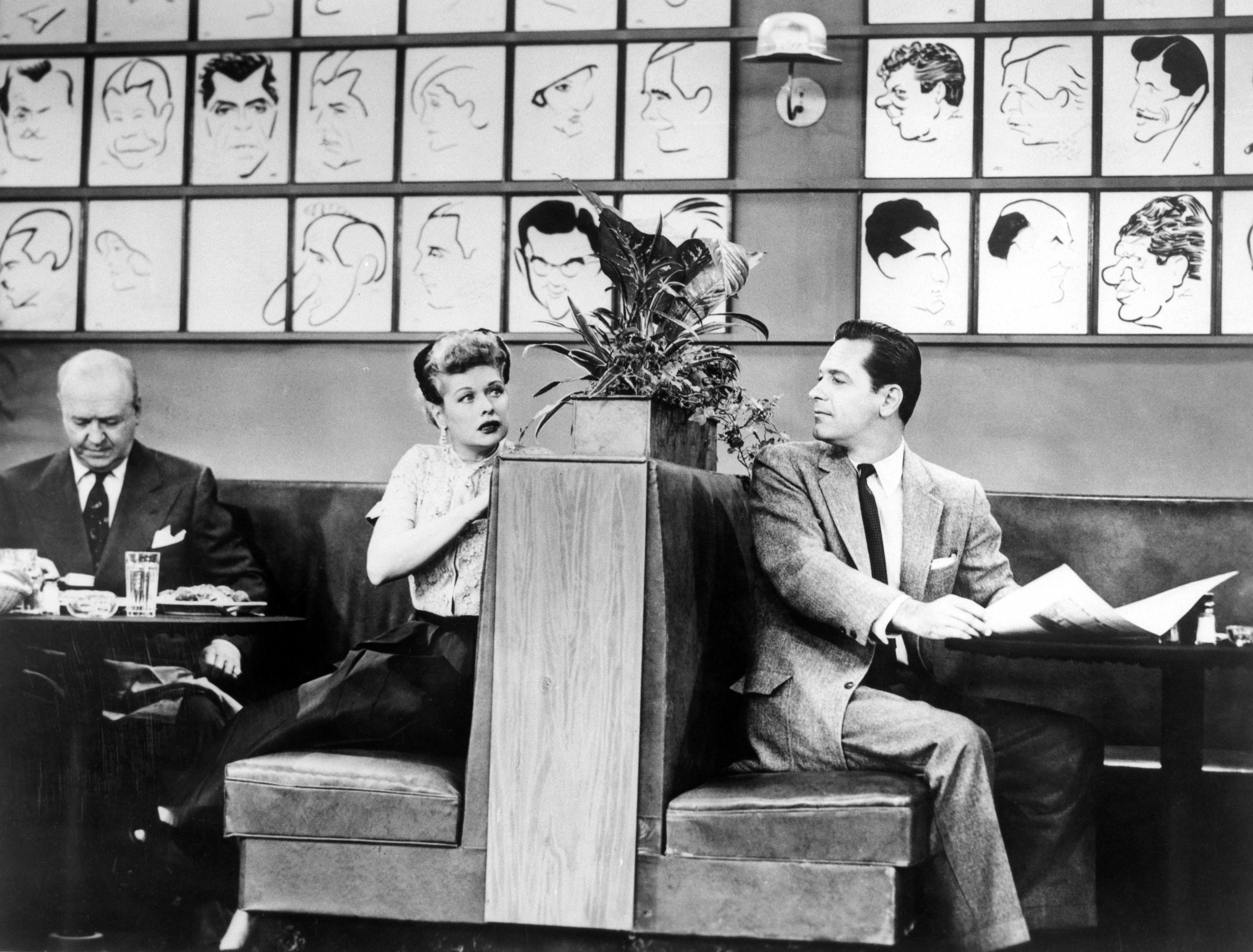 |
|
| (ca. 1950s)* - The Brown Derby on Vine was featured in that legendary episode of "I Love Lucy" where Lucy Ricardo accidentally covers William Holden in food after gawking at the actor from an adjacent booth. Bettmann Archive / ABC News |
Historical Notes The Brown Derby in Hollywood is where stars usually frequented, and was the place to see and be seen. Humphrey Bogart, Groucho Marx, Cecille B. Demille and other Hollywood legends could be seen eating here. |
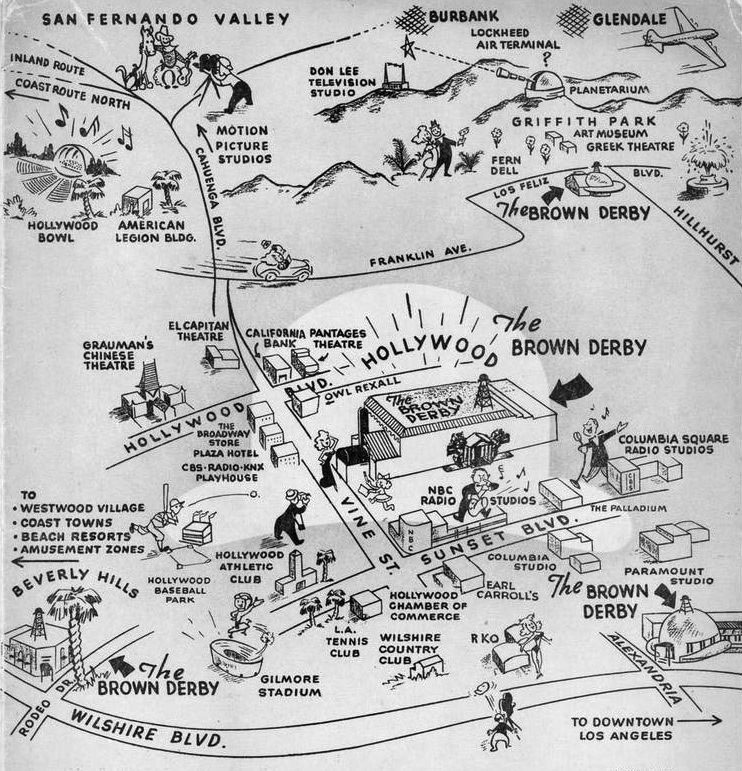 |
|
| (1947)* - Entertaining caricature map of Post-World War II Los Angeles, which graced the cover of the dinner menu for the famous Brown Derby Restaurant. Included on the map are the four locations of the Brown Derby. Image courtesy of Barry Lawrence Ruderman Antique Maps (RareMaps.com) |
Historical Notes The Brown Derby chain included restaurants in Hollywood, Beverly Hills, L.A. (Wilshire) and the Los Feliz area. The Los Feliz Brown Derby at 4500 Los Feliz Blvd is the last remaining branch of the chain still extant and in operation. Technically there were seven different Brown Derby buildings: two in Hollywood including this one and later a short-lived one located on the NW corner of Hollywood and Vine; three on Wilshire, all within a few blocks of each other on the north side of Wilshire Boulevard (1st Location; 2nd Location; 3rd Location); one in Beverly Hills; and one in the Los Feliz area. |
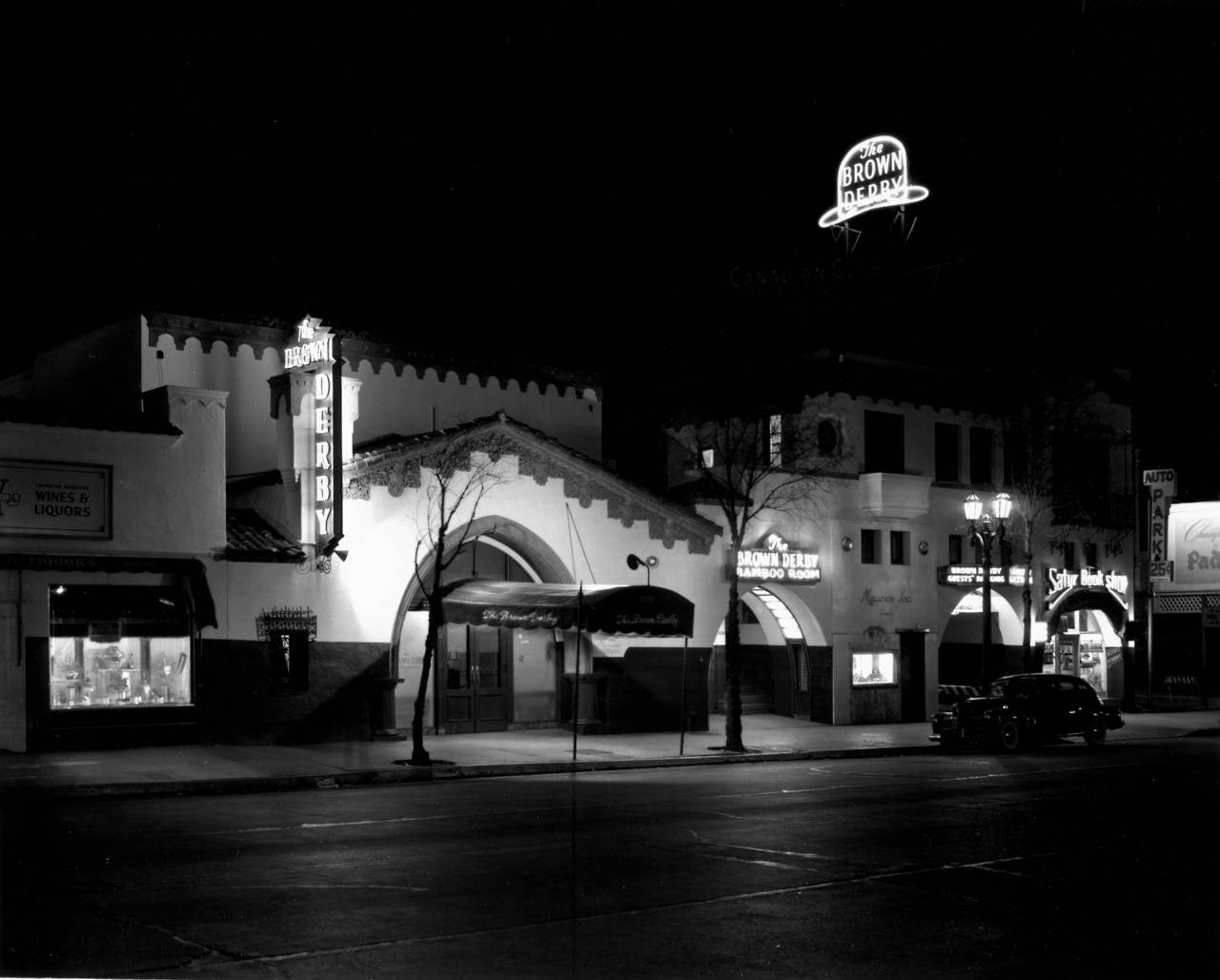 |
|
| (1944)^ - The Brown Derby at night, located at 1628 N. Vine Street. Not quite a still life: the long exposure reveals the blurred spectral figure of a man to the left of the entrance awning. The Satyr Book Shop is seen on the far right. |
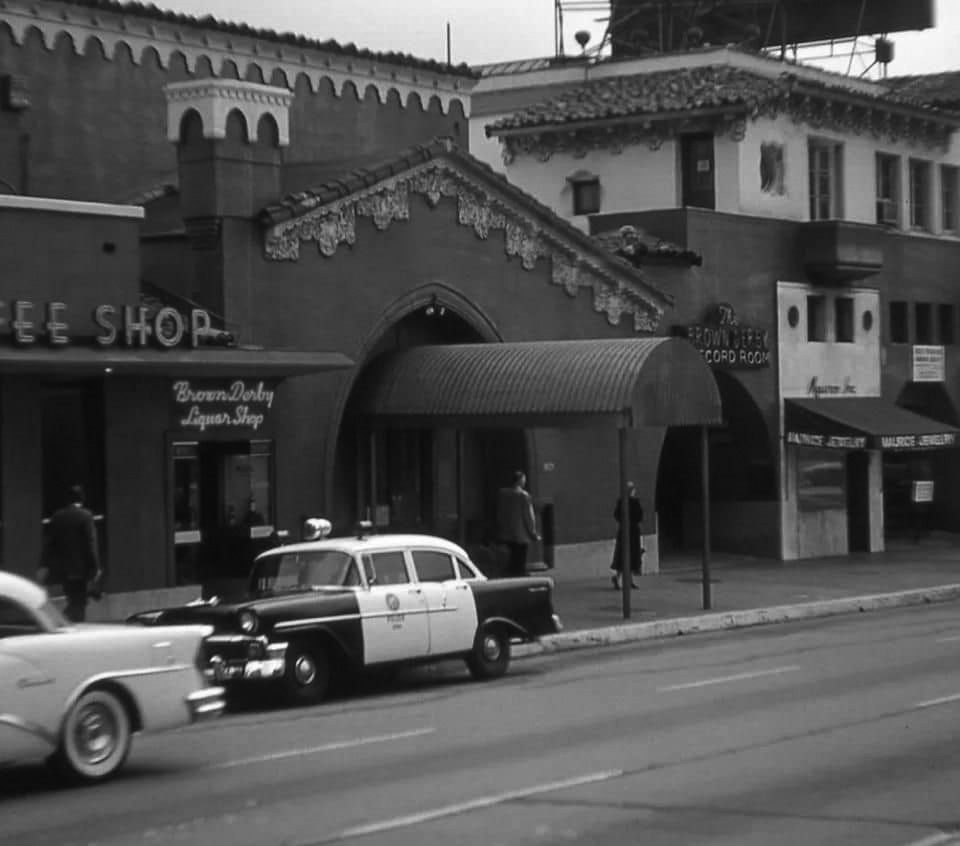 |
|
| (ca. 1955)^ - Police car parked in front of the The Brown Derby on Vine. Photo courtesy of Dennis John Depew |
Historical Notes The Brown Derby building was largely destroyed by fire in 1987. Only a small fragment of the restaurant's facade remains, and was being incorporated into a new W Hotels development. In the nineties, the building was home to a family of punk squatters.*^ After the fire, the Brown Derby re-emerged on the NW corner of Hollywood and Vine, but would be there for only a short period of time. |
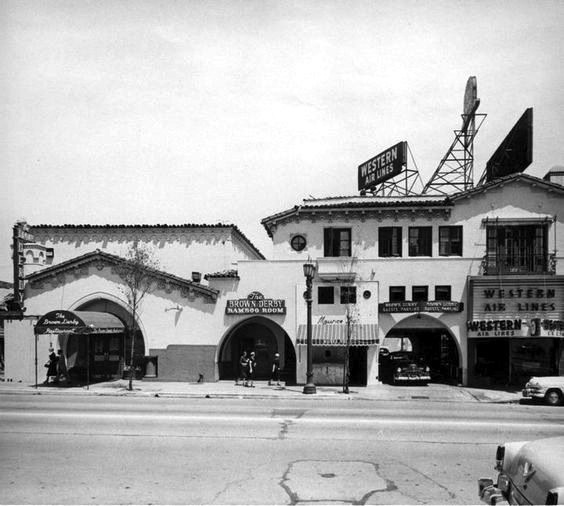 |
|
| (ca. 1949)^ - View showing the Brown Derby as seen from across the street with the Western Air Lines office on the right. |
Herman Building (Remaining part of the complex that included the Brown Derby)
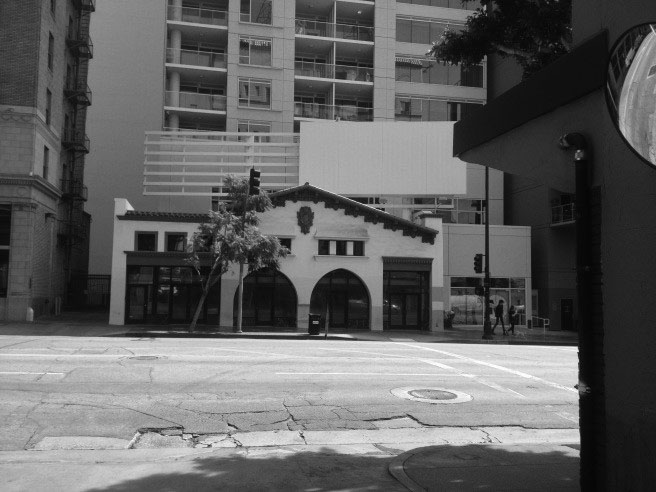 |
|
| (2016)*.* - View showing the Herman Building which was part of a complex of Spanish Colonial Revival buildings designed by architect Carl Jules Weyl that included the now-destroyed Hollywood Brown Derby Restaurant next door. The Taft Building, SE corner of Hollywood and Vine, is on the left. |
Historical Notes Over the years, the Herman Building was home to many businesses, most notably a restaurant in the 1940s-1950s called the Ham & Egger. Johnny Grant, who went on to become the Honorary Mayor of Hollywood, broadcast a live radio show from the restaurant where he interviewed such famous celebrities of the day as Bob Hope, Jimmy Durante and Alan Young. Click HERE to see the Herman Building in 1950. The building has been owned by the Blue Family since the 1970’s. Their business, Bernard Luggage Co., was originally located at the corner of Hollywood & Vine where 33 Taps is today. They moved into the Herman Building in the 1950’s and bought it 20 years later. When the city sought to develop the area for the W Hotel & Residences project, son Bob Blue refused to sell the property and the city attempted to take it by eminent domain. After a contentious battle, Blue eventually won his case, and the W Hotel was built around the property which was reconstructed and restored to its original look. ^ Click HERE for a contemporary Google Street View. |
* * * * * |
|
Other Sections of Interest |
|
Water and Power in Early LA |
|
Newest Additions |
New Search Index |

A new SEARCH INDEX has been added to help navigate through the thousands of topics and images found in our collection. Try it out for a test run.
Click HERE for Search Index |
* * * * * |
< Back
Menu
- Home
- Mission
- Museum
- Major Efforts
- Recent Newsletters
- Historical Op Ed Pieces
- Board Officers and Directors
- Mulholland/McCarthy Service Awards
- Positions on Owens Valley and the City of Los Angeles Issues
- Legislative Positions on
Water Issues
- Legislative Positions on
Energy Issues
- Membership
- Contact Us
- Search Index
© Copyright Water and Power Associates
Layout by Rocket Website Templates